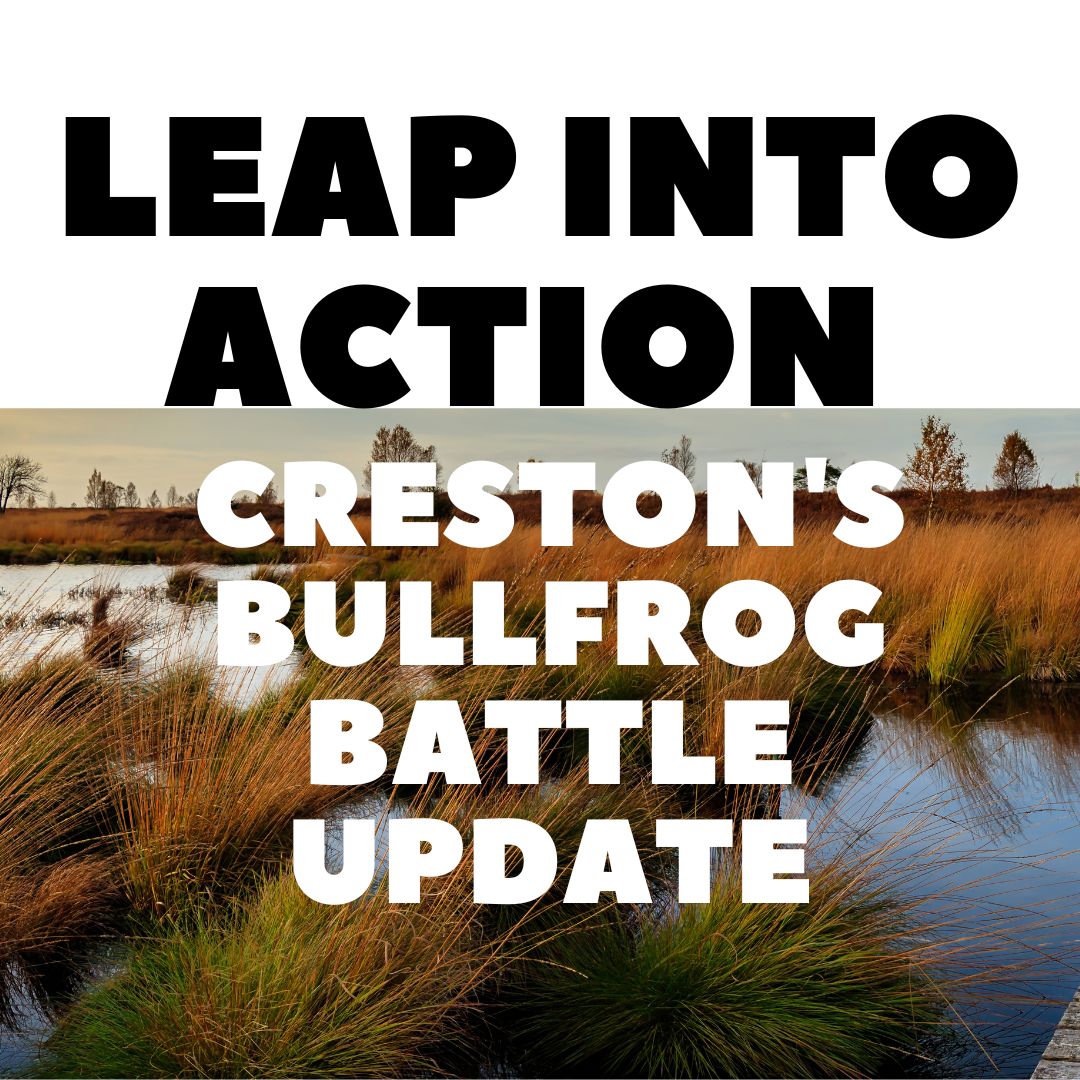In the picturesque landscapes of Creston, British Columbia, an invasive threat has been moving into local ecosystems—the American bullfrog. The American Bullfrog Action Team (ABAT) is at the forefront of the battle against this formidable intruder, and conducting field work as part of the Kootenay Bullfrog Control Program. In this blog post, we’ll delve into the consequences of the American bullfrog invasion and provide updates on the ongoing efforts to curb its impact on native biodiversity.
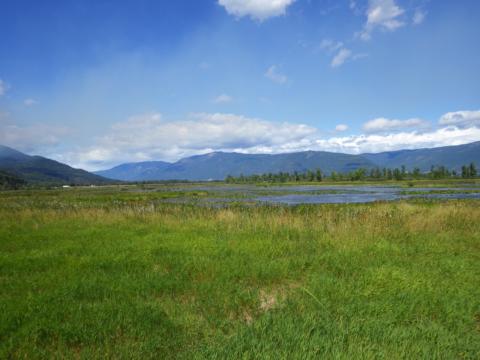
We received recent updates from Devon Moore the Coordinator, Kootenay Bullfrog Control Program, a dedicated member of ABAT, to shed light on the challenges and victories faced in the fight against the invasive American bullfrog.
Community Reports and Increased Outreach:
This year brought forth interesting reports from the community, shedding light on the presence of American bullfrogs in unexpected locations. A lone frog’s call in the northern area near the Northern leopard frog breeding site raised concerns, prompting the need for further investigation. Another incident occurred at Corn Creek marsh, where a person discovered a frog, but unfortunately, due to unforeseen circumstances, couldn’t provide follow-up information. Despite blitz surveys, no bullfrogs were found. Community science remains a vital aspect of the bullfrog control program emphasizing the need for an expanded outreach plan.
Expanded Surveys and Collaborations:
This year marked the first-ever survey of Duck Lake, north of the NLF breeding site, expanding the monitoring radius. Collaborative efforts with Carly Dolman of the ONA resulted in a comprehensive survey in Pend Oreille, revealing the first confirmed recovery of bullfrogs near the Seven Mile Dam. The origin of these invasive frogs remains uncertain, emphasizing the need for collaboration with neighboring regions.
The Creston Bullfrog Control Program is actively engaging high schools, not only by providing bullfrogs for educational purposes but also by assisting with outreach initiatives.
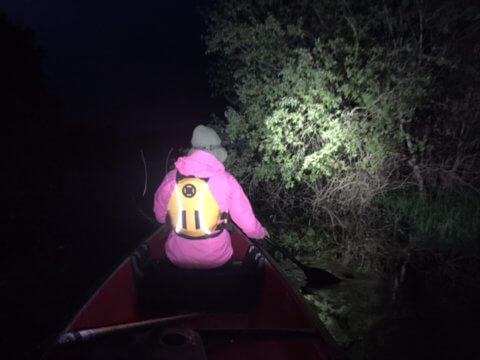
Detection and Euthanization Statistics:
The year 2023 saw a substantial increase in observations, with 1182 detections and 694 euthanizations in Creston alone. Dale’s Marsh, in the southwest corner of the valley, played a significant role in skewing the capture rate, hosting a breeding event that led to the emergence of hundreds of juveniles and metamorphs.
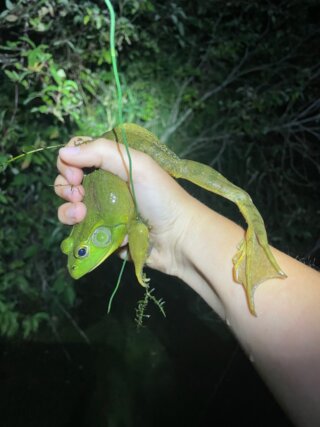
Consequences of Invasion:
The American bullfrog’s invasion poses severe threats to native ecosystems. As voracious predators, they consume anything that fits into their mouths, including endangered native amphibians and fish, exacerbating the decline of native frog populations. Additionally, bullfrogs can spread the chytrid fungus, contributing to declining amphibian populations. Their competitive nature and ability to outcompete native frogs like the endangered Northern leopard frog highlight the urgent need for effective control measures.
How can you Help:
1. Don’t Let it Loose:
- Avoid purchasing bullfrogs as pets.
- Never release bullfrogs into the wild.
The “Don’t Let It Loose” Program educates consumers and retailers to be responsible pet owners. Interested individuals can join the Pet & Aquarium Recognized Retailer program through www.recognizedretailer.ca.
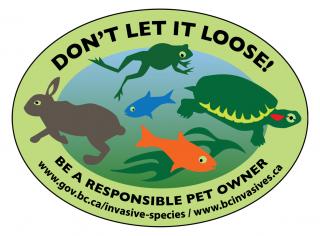
2. Legal Restrictions:
It is illegal under the Wildlife Act to capture, transport, keep, or sell wild animals, including bullfrogs.
Transporting wild bullfrogs or tadpoles between locations is strictly prohibited
3. Native Habitat Enhancement:
Create a welcoming environment for native frogs in your backyard by providing water, shelter, and insects. Resist the temptation to introduce large tadpoles to backyard ponds, as this is a primary means by which bullfrogs spread
4. Have you seen or heard a bullfrog? Report it!
Phone 250-354-6333
Email: kootenaybullfrog@gov.bc.ca

The battle against the invasive American bullfrog continues in Creston, with the community’s involvement playing a crucial role. As the Creston Bullfrog Control Program evolves, expanded outreach and collaboration efforts will be essential to effectively manage and control the spread of this invasive species. The commitment to responsible practices and public awareness is key to preserving the biodiversity of the Central Kootenay region.

